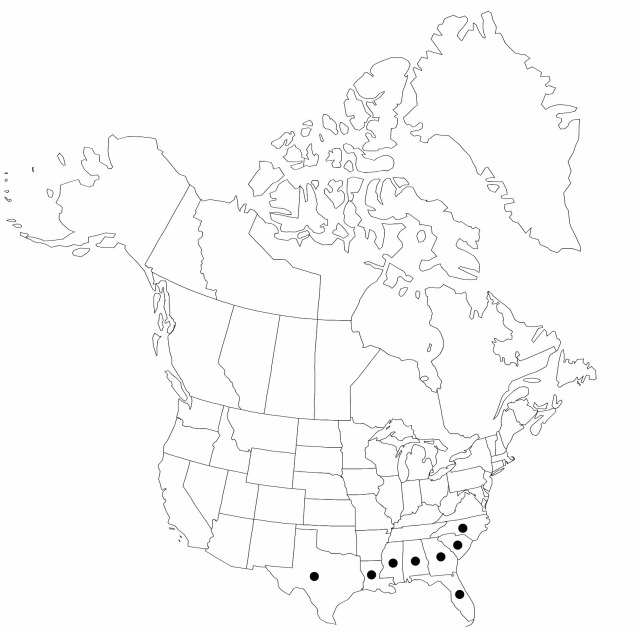Fimbristylis dichotoma
Enum. Pl. 2: 287. 1805.
Plants perennial, cespitose, (10–) 20–80 cm, base thickened, not bulbous; rhizomes absent. Leaves nearly distichous, spreading to ascending, 1/2 length of culms; sheaths distally ciliate, backs mostly glabrous; ligule line of short hairs; blades narrowly linear, 2–3 mm wide, flat to broadly involute, scabridciliate, adaxially smooth or hirtellous. Inflorescences: anthelae compound, dense or open, ascending-branched, longer than broad; scapes slender, 1 mm wide, slightly compressed distally; proximalmost involucral-bract exceeding anthela. Spikelets pale drab brown to chestnut-brown, ovoidlanceoloid, 4–8 mm; fertile scales broadly oblong or ovate, 2 mm, acute to obtuse angled, glabrous, midrib reaching scale tip or excurrent, finely mucronate. Flowers: stamens 1–2; styles 2-fid, flat, fimbriate. Achenes white to brownish, lenticular, obovoid, 1–1.2 mm, cancellate, each face longitudinally with (5–) 10–12 ribs, connected by vertical rows of horizontally rectangular pits. 2n = 20, 30.
Phenology: Fruiting summer–fall, into winter southward.
Habitat: Moist, usually sandy waste areas, roadsides, low fields, and savannas
Elevation: 0–200 m (to 2000 m, tropics)
Distribution

Introduced; Ala., Fla., Ga., La., Miss., N.C., S.C., Tex., Mexico, West Indies, Bermuda, Central America, South America, Eurasia, Africa, Atlantic Islands, Indian Ocean Islands, Pacific Islands, Australia
Discussion
Fimbristylis dichotoma is found in temperate to tropical regions worldwide. It is one of the most widespread and weedy species of Fimbristylis, unquestionably with many races and forms. The two commonest forms in the United States often occur in mixed populations, one sort with inflorescence branches more ascending, inflorescence dense, habit lower, and leaves broader; the other sort usually taller, inflorescence more sparse, branches more widely spreading, and leaves more ascending and narrower. The abundance of such plants both in regions where rice originated and in regions where rice is, or was, introduced, indicates an Asian origin for such weeds.
Selected References
None.
Lower Taxa
"shortened" is not a number."/2lengthofculms" is not declared as a valid unit of measurement for this property.
